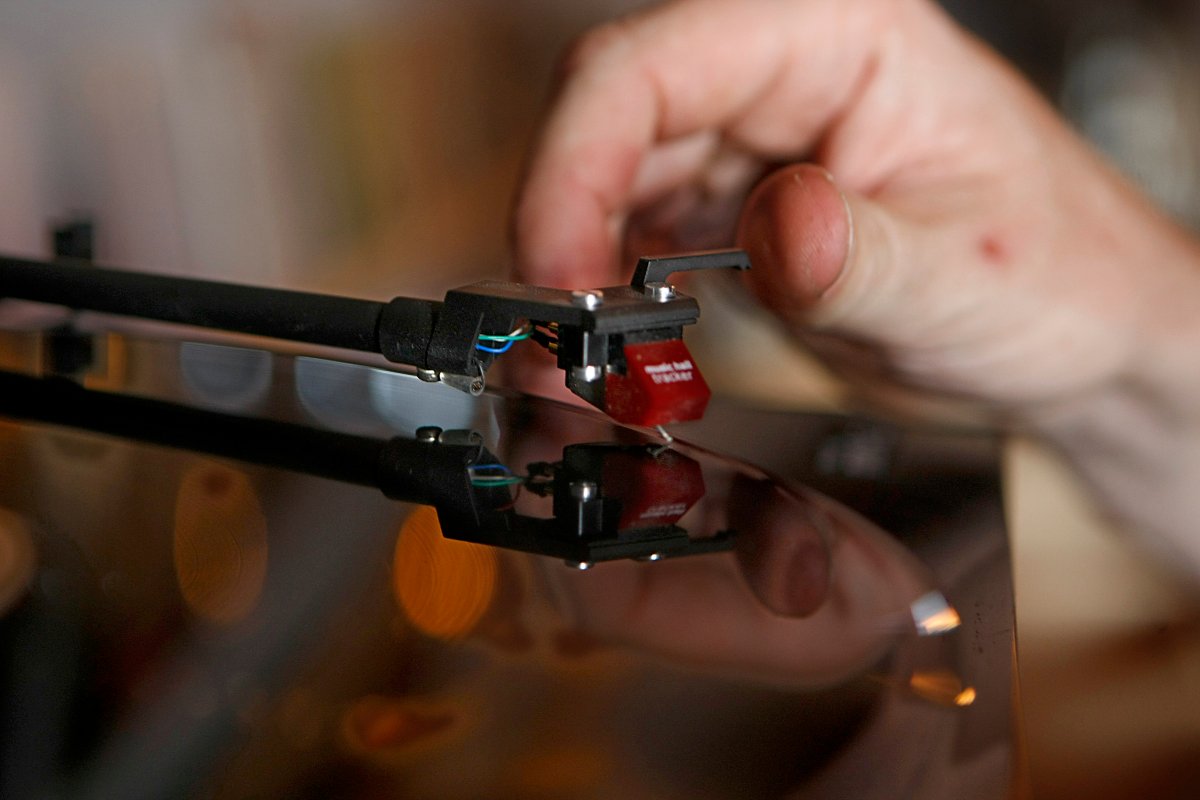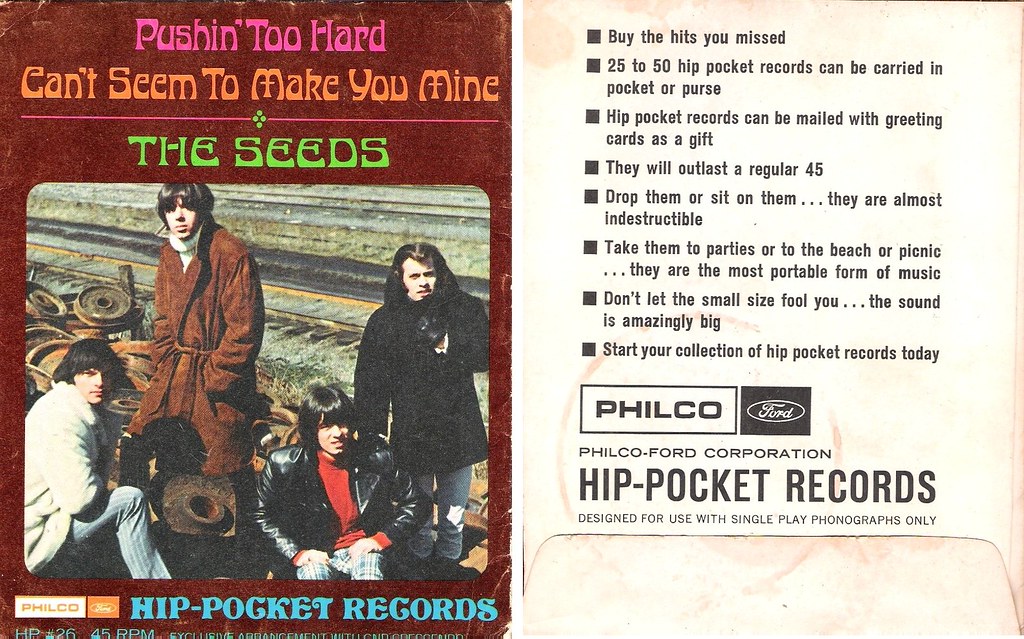Most fans of vinyl are happy collecting 33 1/3 RPM albums, 7-inch 45 RPM singles, and the odd 12-inch. A subset dig for rare 78 RPM discs, especially the blues recordings of the 1920s and ’30s. But what if want to get really esoteric with your library? An option is to dive into the world of the obsolete and the forgotten.

The history of recorded music is littered with audio storage formats that either died out or went nowhere. The fact that they existed at all will amaze you. At one point, someone thought these were good ideas.
The Last-ever 78s
The 10-inch 78 RPM disc ruled the recorded music industry for close to 60 years. Emile Berliner, the German-American inventor, patented the idea of putting audio on a flat rotating disc in 1887. Within a couple of decades, the 78 had muscled out all other formats and had become the worldwide standard. The technology hung on until stereo LPs pressed on polyvinyl chloride began to take off in the 1950s. U.S. sales dropped from 4.5 million units in 1957 to just 500,000 a year later.
North America was done with them by 1960. Possibly the very last pop record to be released in the format was Bobby Bland’s Cry Cry Cry on the Duke label in late September 1960 which ended up rising to no. 9 on Billboard’s R&B charts over the ensuing months. Elvis Presley’s A Mess of Blues is generally regarded as the last 78 to be released in the U.K. There were, however, some small labels that continue to release 78s for a few more years. Polkaland, a company that specialized in, well, polkas, is known to have released 78s as late as 1962.
- Taylor Swift surprises fans with double album, ‘The Tortured Poets Department’
- Hot Docs left out of budget 2024 funds as financial woes cloud arts organization
- Quebec artists demand more provincial funding, say many struggle to ‘work creatively’
- Calgary Opera’s production of ‘Das Rheingold’ features fantastic effects, costumes
But the 78 refused to die, largely because kids got hand-me-down record players that ran at 78 RPM. This resulted in a flood of children’s records played at that speed. When the old record player gave out, you could head to Sears to buy a new portable unit that ran at 33 1/3, 45, and 78. The tonearm came with two styluses, a tiny one for the microgooves of LPs and 45s and one for the bigger grooves for the 78. There was usually a little knob that allowed you to flip the stylus over inside the headshell.
Meanwhile, the 78 continued to be used in other parts of the world. It was possible to find brand new pop releases throughout South America on 78 as late as the 1970s. If you’re a hardcore Julio Iglesias fan living in Argentina in 1972, you had the option of buying his singles this way.
Forcing listeners to spin a record at 78 became a bit of a gimmick, too. For example, in 1968, Moby Grape included a track called Just Like Gene Autry on their Wow album. While the rest of the record spun at 33 1/3, fans had to dial it up to 78 for the last track on side one.
The Hip-Pocket Record
Long before Sony Introduced the Walkman in 1979, several record labels tried to make pre-recorded music portable by issuing 4-inch 45 RPM flexible discs with one song per side that played on a tiny record player made by Philco that fit in the pocket of your jeans. Hip-Pocket records — and there were about 50 titles from everyone from Aretha Franklin to Van Morrison — were issued by Atlantic, Mercury, and Roulette through Woolworth stores and through Ford dealerships (Philco was owned by Ford and made their radios) between 1967 and 1969.
Here’s some ad copy from those days.
Buy the hits you missed
25 to 50 hip pocket records can be carried in pocket or purse
Hip pocket records can be mailed with greeting cards as a gift
They will outlast a regular 45
Drop them or sit on them…they are almost indestructible
Take them to parties or to the beach or picnic…they are the most portable form of music
Don’t let the small size fool you…the sound is amazingly big
Start your collection of hip pocket records today.
Each record cost 69 cents, equal to over $5 today. But by the end of the decades, the rise of 8-tracks and cassettes sealed the fate of the format.
The White Stripes’ 3 RPM Record
On the occasion of the third anniversary of Jack White’s Third Man Records, the company issued several records that spun at a glacial three (3!) revolutions per second. (Third anniversary = 3 RPM, geddit?) This series contained a series of Stripes’ singles that were never actually meant to be played. Instead, they were tchotchkes given out at the birthday party.
And this wasn’t the first time that Jack has been creative with size and speed. In 2005 and 2006, the White Stripes sold tiny records that played on tiny turntables called the Triple Inchophone. A half-dozen or so of these mini-records were made available. And yes, you could play them.
Then in 2019, Jack teamed up with turntable manufacturer Crosley for Record Store Day to create a working machine that played three-inch records.
Records That Play from the Inside Out
Everyone knows that you play a record by laying the stylus just inside a lip on the outermost edge. From there, it follows a spiral groove towards the centre.
Yes, but not always.
In 1993, Megadeth released their Sweating Bullets single on a slab of blue vinyl. To play it, you had to place the tonearm on the innermost groove on each side. The stylus then tracked the spiral from the inside out. (This is how a laser reads a CD).
My collection features a special 2014 edition of Camper Van Beethoven’s Key Lime Pie album, which was first released in 1989. Side one ends with a song called Closing Theme, but it won’t play unless you lift the tonearm, place it on the innermost groove, and then switch the speed from 33 1/3 to 45 RPM after which it plays from the inside out. Why? Just to be freaky, I guess.
The Longest Single Vinyl Record Ever
In the mid-1970s, Radio Shack was the exclusive source of an album by Arthur Fielder and the Boston Pops that had a total running time of 90 minutes — that is, 45 minutes per side. The only way to jam in that much music was to cut the grooves impossible close together. Yes, this increased capacity, but the audio quality was horrible, especially as you got closer to the centre. The grooves were so tiny and shallow that they contained only a fraction of the audio information found in a regular LP.
Glow-in-the-Dark Records
In 1978, a few records started to appear that were pressed on vinyl that looked normal enough with the lights on (they appeared as off-white). But as soon as things got dark, the vinyl glowed in a luminous green. Kraftwerk released 12-inch single called Neon Lights that year, followed by a 7-inch of Pocket Calculator in 1981.
Happy collecting.
—
Alan Cross is a broadcaster with Q107 and 102.1 the Edge and a commentator for Global News.
Subscribe to Alan’s Ongoing History of New Music Podcast now on Apple Podcast or Google Play







Comments